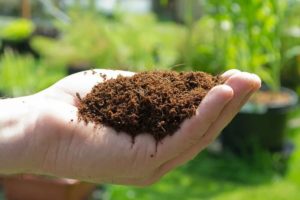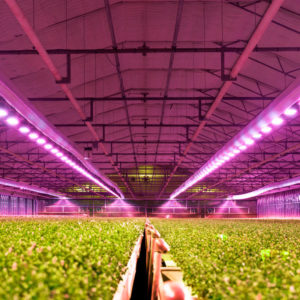If you want to grow hydroponic spinach, you’re in the right place. Spinach is the victim of a bad rep, at least among kids and those pickier eaters. These days though, anyone can find an awesome spinach recipe that instantly converts. Spinach is one of the best plants for hydroponics, and pretty much anyone can do it. Even better, it’s practically a superfood. So why not grow your own spinach hydroponically indoors?
Hydroponic Spinach: The Basics
Spinach is one of those plants that you don’t need an agriculture degree, much less hydroponic experience, to grow. Here are the basics you need to know about growing spinach hydroponically.
- pH tolerance between 5.8-7.0 (ideal 5.8-6.0)
- Spinach is a cool season crop
- Ideal temperatures between 60 and 68 degrees Fahrenheit (15.5-20C)
- Time to grow: 30 to 45 days
- Blue light preferred
- Works well with fluorescent grow lights
- “Cut and come again” plant
- Best in NFT and DWC systems
- May be used with Kratky Method
- Target EC range: 1.8 to 2.3
- Photoperiod: 12 hours of light daily
- Best with extra aeration
- Re-seed every two weeks if harvesting the entire plant
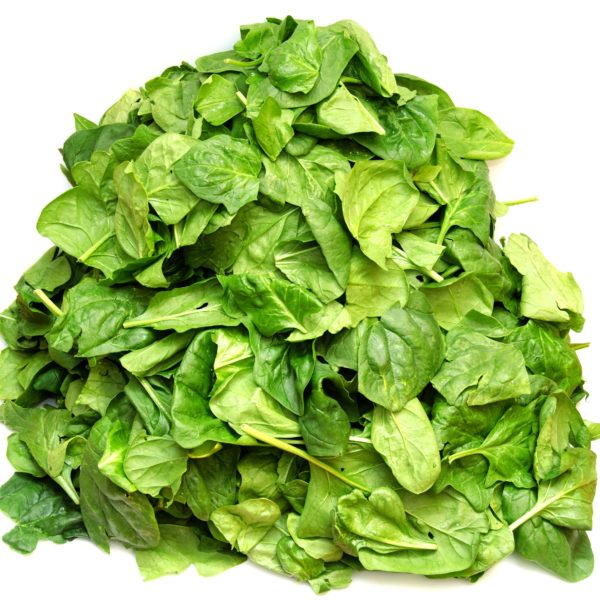
Starting to Grow Hydroponic Spinach
When you start growing hydroponic spinach, you have a few choices on how to start. You can clone a plant and give yourself a head start. Or, you can try and transplant a younger spinach plant from soil. If you decide to transplant from soil, transition your sprouts gradually and be on the lookout for soil based pests and pathogens.
In hydroponics, there are a lot of plants that are hands down easier to propagate from a clone. Spinach does all right as a clone. However, it can be a bit easier to just start from seed to avoid problems with clones striking.
Always check the date on the spinach seeds you use.
The older spinach seeds are, the less likely they are to sprout.
Seeds take only a few days to germinate. Try to keep them in an area with temperatures between 64 and 68 degrees Fahrenheit (17.7-20C). Starter plugs like rockwool or coco cubes are ideal. If you use rockwool, just make sure you rinse it properly (no squeezing!) and allow it to sit for at least 24 hours. Once you put your seeds in, make sure to keep them moist. Spinach seeds are especially sensitive to dry environments while they are in the germination phase.
Sprouting spinach
After about three days, you’ll see your spinach sprout. Once it does that, you can start giving it some light. Fluorescent grow lights are ideal for this phase, even if you plan to switch to LED or HID lights later. Your sprouts will spend the next week growing into saplings. While they do that, limit their light to around three or four hours a day.
If you use fluorescent lighting to sprout, it’s also fine to keep it the same to grow spinach as it matures.
While your spinach is still all sprouts and saplings, you don’t need to worry about giving them nutrients. Just make sure you give them fresh water to prevent the root systems from drying out. After that week, they are officially saplings, and are ready for transplant.
Growing Spinach Hydroponically
Now that you have your spinach saplings transplanted, what do you do?
Let them get used to your hydroponic system first. Saplings need a couple of days without extra nutrients to establish themselves. Use these first few days to gradually increase the time your grow lights are on each day. Eventually, you’ll work up to about 12 hours of light a day (fluorescent lighting, HID, or LED). Leave the lights on for a couple more hours each day until you get to the 12 hour mark.
Once they’ve had a few days to adjust and get on a new lighting schedule, you can start adding a nutrient formula to your system. While you will be adding nutrients, you will not be adding them at full strength. For the first couple weeks, dilute your nutrient solution. Don’t use the regular amounts you would otherwise. Take the nutrient solution down to a quarter or an eighth of the regular concentration.
After a couple of weeks, go ahead and add nutrients to reach the regular concentration. Remember, you should also check your EC after adding nutrients. If it’s too low, you can always add more. If it’s too high, you’ll have to dilute it all over again. You should also measure pH daily at the very least, and always check pH when you check EC too.
Spinach is a cool weather crop, and when you grow hydroponic spinach, it’s easy to let temperatures get too high.
Be careful about letting your grow room get too warm. Spinach may bolt and become bitter if temperatures go above 75 to 79 degrees F (23.8-26C).
What is Kratky Spinach?
As we mentioned, spinach does really well growing in most hydroponic systems. When you grow hydroponic spinach though, there are a few different hydroponic systems that are preferred. DWC (deep water culture) and NFT (nutrient film technique) are some of the most popular. However, there’s another method that gets a lot of buzz: the Kratky Method.
While it isn’t your typical hydroponic system setup, it’s still a piece of water culture technique. The principles are very similar to that of Deep Water Culture systems. However, DWC systems use an airstone, frequent water changes, and regular monitoring.
The way to grow Kratky spinach is certainly low maintenance, low hassle, and more or less hands off. You start with a similar setup to that of DWC. There’s a large reservoir that holds nutrient solution, and plants sit in netted pots with their roots submerged in the water. The difference is, you don’t really change out water, add nutrients, adjust pH, or anything else.
While DWC systems use an airstone to oxygenate the water, the Kratky method relies on evaporation. The idea is that as plants take in water (and it evaporates), more of the root zone is exposed, giving the roots oxygen.
Instead of giving your plants a break from nutrients for the first few weeks, you start them right away. Your reservoir should have the ideal pH and EC levels right from the start. Then, just plant your hydroponic spinach and watch it start growing.
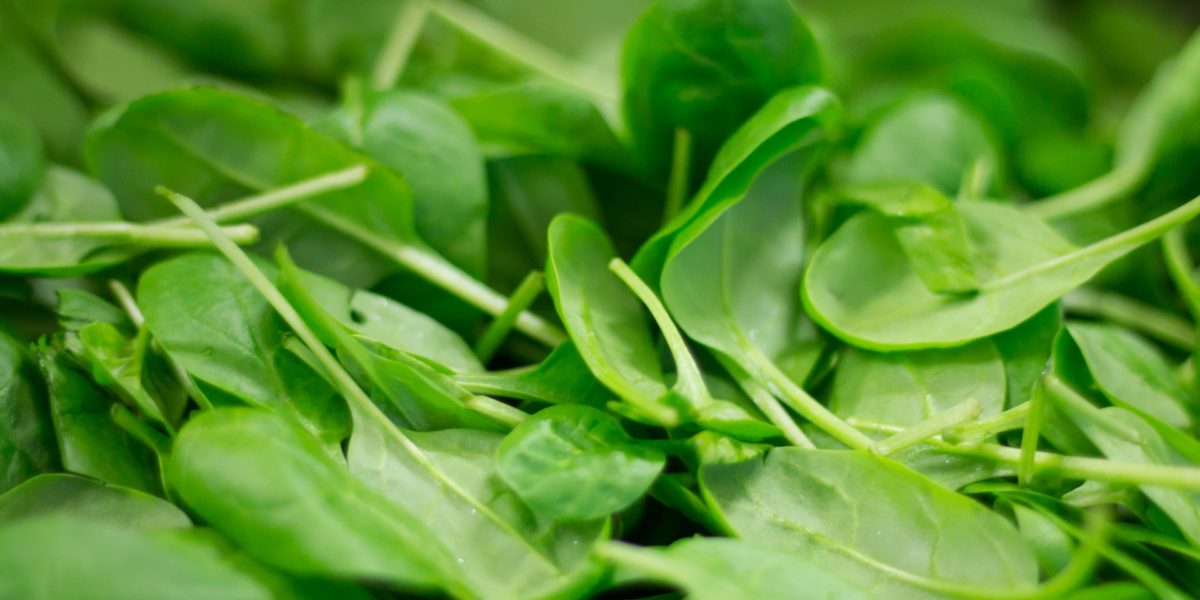
Possible issues with the Kratky Method
In a regular hydroponic system, you change out water to keep nutrients from becoming too concentrated. Of course, your aim is also to keep it from going stagnant and keep pH stable.
Because you don’t change out your water with the Kratky method, your hydroponic tank is more susceptible to algae, fungi, bacteria, as well as pH and EC imbalances. If there’s an issue with water quality, you might not even know it until it’s too late to fix it.
Hydroponic spinach is a pretty low maintenance crop, but it still needs care if something is out of balance.
Another thing to mention with the Kratky method:
You won’t be able to get crops to multiple harvests.
The system relies on water evaporating to oxygenate roots, and there isn’t any extra water added. That means that once your plants are grown, and the water is gone, so is your super simple hydroponic system. That isn’t to say you cannot use it as a way to grow single crops. In fact, it’s a great way to start getting acquainted with the principles of hydroponics. But if you want to keep growing and harvesting all year, you’ll want to move up to a more traditional hydroponic system.
Want to learn more about the different systems? Check out this guide!
Harvesting Hydroponic Spinach
Spinach is a great plant to keep harvesting a bit at a time. Yes, you can take all the leaves at once, but then the plants won’t really come back. If you want to harvest your hydroponic spinach at once, plan to seed your system every two weeks or so to keep up.
Like basil, lettuce, and most other leafy greens, spinach makes an ideal ‘cut and come again’ plant. You harvest a little bit at a time and leave the rest to come back. The reason you want to keep some leaves is that your spinach still needs to take in light for photosynthesis. It’s how plants produce the sugars and starches they need to grow more foliage. And of course, when you grow hydroponic spinach, you’re doing it so you can harvest that very same foliage.
It’s best to use a special, sterilized set of shears or scissors to take the leaves you want. While spinach is easy enough to pick off with your fingers, that’s far from ideal. You can end up damaging stems, or even spreading pathogens within your system.
Once you’ve harvested what you want, go ahead, and get cooking!
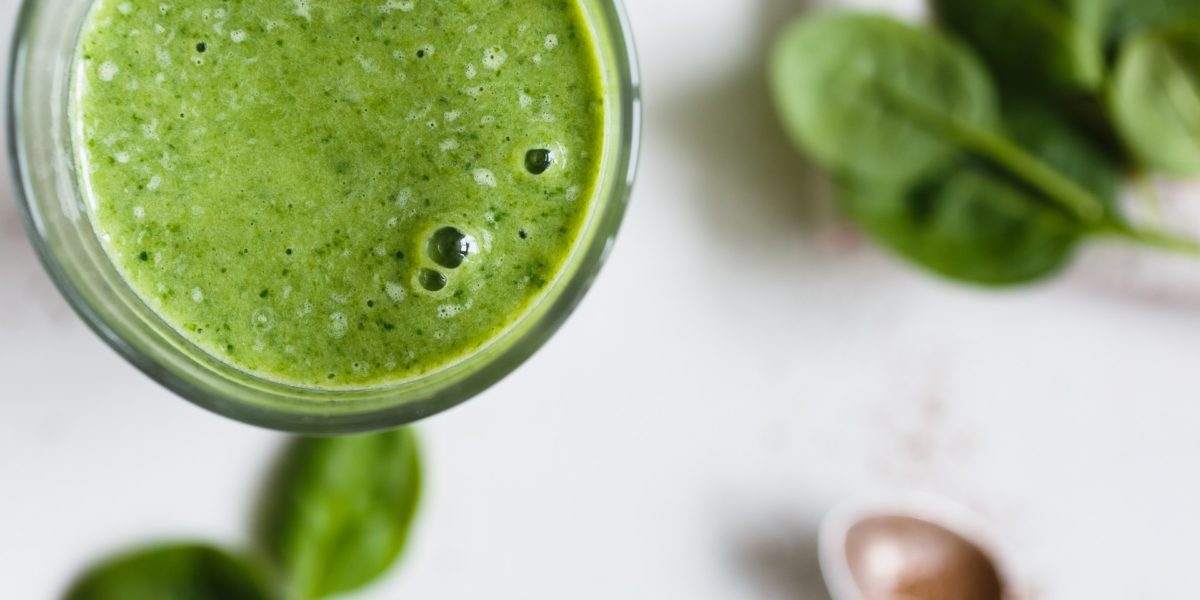
Storing fresh spinach
Spinach is notorious for getting slimy if you don’t store it right, or if you store it for too long. When it’s fresh from your hydroponic garden, that’s even more true. You will find plenty of different ways to store spinach, but it’s always best to rinse it and dry it completely before storing it.
Paper towels are the best way to dry out the leaves and keep your spinach crispy. Lay the leaves out on a counter with some paper towels for an hour or so. If you need to, flip the leaves once in a while so they all get dry.
The paper towels come in handy when you want to store fresh spinach too. Yes, you can just put it in a plastic bag or container. But, it won’t last as long, and it won’t stay as crisp. The best thing you can do is line your container with paper towels, put the spinach in, and refrigerate it until you’re ready to use it. Of course, a sealed container is best too, since there is a little air, but enough of a seal to keep the spinach fresh.
Frequently Asked Questions
Can I use the Kratky method for other plants too?
The Kratky method works for most leafy greens, plants that do well in simple DWC setups, and those with low nutrient requirements. Herbs like basil and thyme do well in this setup, but so do other plants like chard and lettuce. The lower the nutrient requirements, the better. Since you’re not adding anything, water included, you need low maintenance varieties for it to work.
Can you eat bolted spinach?
If you’ve grown hydroponic spinach and temperatures get too warm, it may bolt. Bolting is part of a natural process that spinach, lettuce, and other greens do when they’re ready to reproduce. You’ll know your growing spinach is bolting when it’s grown taller stalks, and it may even begin flowering. It’s perfectly safe to eat, but you might not like the flavor. Bolted crops are notoriously bitter. Of course, you can also let it keep flowering and use the seeds when you are growing your next round of hydroponic spinach.
Can you grow spinach in dirt and transplant to hydroponics?
It’s always best practice to keep a crop growing in soil there, although it is possible. Growing these greens hydroponically brings the benefit of less worry over pests and fungi that hide in soil. There’s also the risk that they’ll stop growing or won’t do as well when there’s a huge change in their environment. If you’re really set on growing from transplants taken from dirt, remember to take it slow and give your transplants plenty of time to adjust.

